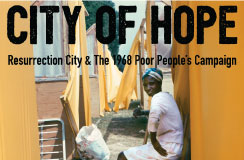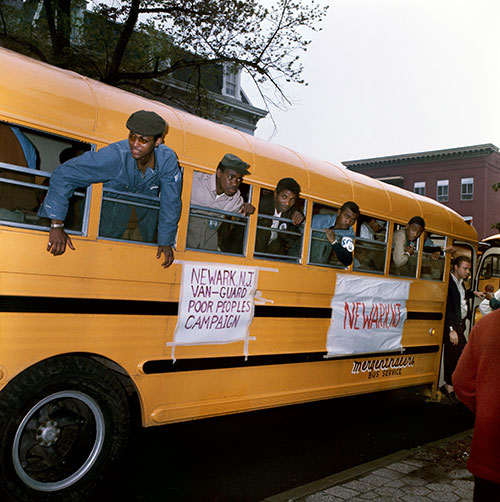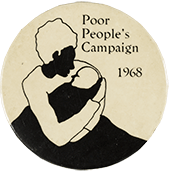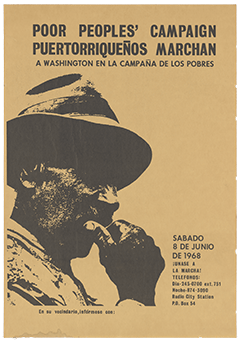

| ---Home |

Exhibition dates:
February 5 - March 15, 2020
This poster exhibit honors Dr. Martin Luther King Jr.’s daring vision for economic justice and opportunity for every U.S. citizen. It examines The Poor People’s Campaign—a grassroots, multiracial movement that drew thousands of people to Washington, D.C. For 43 days between May and June 1968, demonstrators demanded social reforms while living side-by-side on the National Mall in a tent city known as Resurrection City.
During the 1960s, the United States emerged as a superpower on the world stage. But at home, poverty prevented access to opportunities for people of every race, age, and region of the country. Although President Lyndon B. Johnson declared a “War on Poverty” in 1964, tens of millions of Americans were denied livable wages, adequate housing, nutritious food, quality education, and healthcare.
Led by Drs. Martin Luther King Jr. and Ralph David Abernathy, the Southern Christian Leadership Conference (SCLC) declared poverty a national human rights issue. The organization planed the Poor People’s Campaign, a grassroots, multiracial movement that drew thousands of people to Washington, D.C. and set the stage for future social justice movements. Dr. Abernathy declared Resurection City a “City of Hope” that resurrected Dr. King’s hope for justice and faith in the American dream.
Organized by the Smithsonian Institution Traveling Exhibition Service (SITES) in collaboration with the National Museum of African American History and Culture, “City of Hope” highlights a series of newly discovered photographs and an array of protest signs and political buttons collected during the campaign. Featuring 18 posters, the exhibition helps visitors engage and contextualize the Poor People’s Campaign’s historical significance and present-day relevance.




